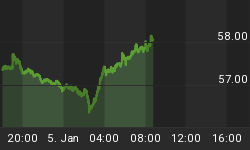House prices are in trouble in many, but not all locations. Nationally, house prices are down. The S&P/Case-Shiller house price index gets the headlines, but a related and less noticed index measures price changes for commercial real estate, which is still in pretty good shape -- at least for now.

Houses exist in a private market. Commercial real estate exists in both private and public forms.
The S&P/GRA Commercial Real Estate Index ("SPCREX") tracks the price level (not total return) of closed commercial real estate transactions, whether in a private or public transaction.
The FTSE/NAREIT index provides both a price index and a total return index of equity REITs. The price, however, is not a real estate closing price, but the share price of the REIT that may be at a premium or a discount to the appraised or estimated market value of the real estate held by the trust.
The commercial types in the SPCREX include; retail, office, apartment and warehouse. Minimum sizes are 10,000 square feet for retail and over 20,000 feet for the others.
The mix of assets in REITs may or may not be the same as the mix of assets in the overall public and private assets covered by the SPCREX index.
Representative overall market equity REIT funds are: VNQ, RWR and IYR.
Domestic sector REIT funds are REZ (apartments), FIO (industrial/office) and RTL (retail).
The chart shows the price return of houses, public and private commercial real estate for the last approximate 15 years.
Houses have declined. REITs have declined. Commercial real estate closing prices have held up fairly well.
Futures for the S&P/Case-Shiller index and the SPCREX index show the decline in housing values and the steady level of commercial real estate values. The housing futures were launched in May of 2006. The SPCREX futures were launched in October 2007.


REITs show the fickleness (or interest rate or stock market sensitivity) of public real estate.
Houses show above trend line appreciation over the last approximate 5 years. We are witnessing a reversion to mean return in housing prices. It may over correct, but it will probably ultimately track the historic long-term trend line.
An important problem with comparing house prices with commercial prices is the cash flow difference.
Individual houses produce negative cash flow for owner-occupants, and in the aggregate probably produce negative cash flow for investors who buy single-family homes or condos as investments. Commercial real estate in the aggregate, on the other hand, produces positive cash flow (yield) -- total return that differs significantly from the price return.
S&P does not publish total return data for SPCREX (because the data is not available), but FTSE/NAREIT publishes total return data for equity REITs. The chart shows the dramatic difference between equity REIT price return and total return.

Yield is critical to investment real estate, particularly in today’s yield-starved market. We have written several articles about REIT yields that can be accessed here.
Real estate is not monolithic. There are imporant country, domestic location and type differences. Do not let house price headlines dominate your thinking. The house price situation is important, but it is not the totality of the real estate market.
Our very rough estimate is that 75 million private homes are owned in the U.S. with a median value in the vicinity of $200,000 each. If that is approximately true, then the market value of all U.S. private homes is in the vicinity of $15 trillion. That estimate is not verified and needs to be looked into more closely, but it may not be a bad ballpark number.
According to S&P, global direct commercial real estate is a $15+ trillion market; domestic direct commercial real estate is a $5+ trillion market; and domestic equity REITs are a $300+ billion market.















